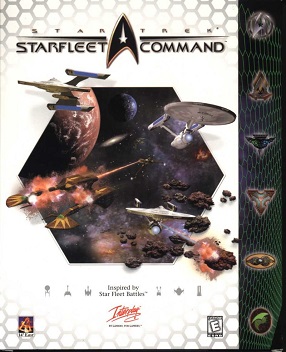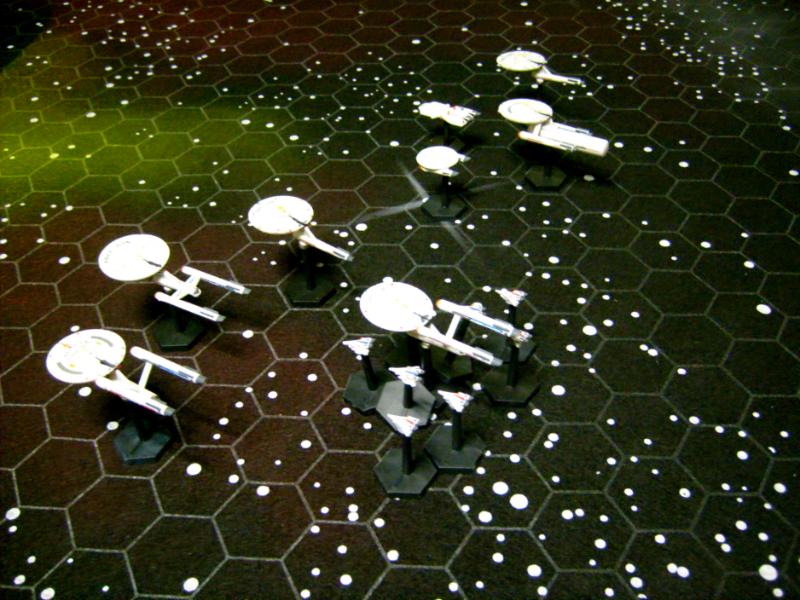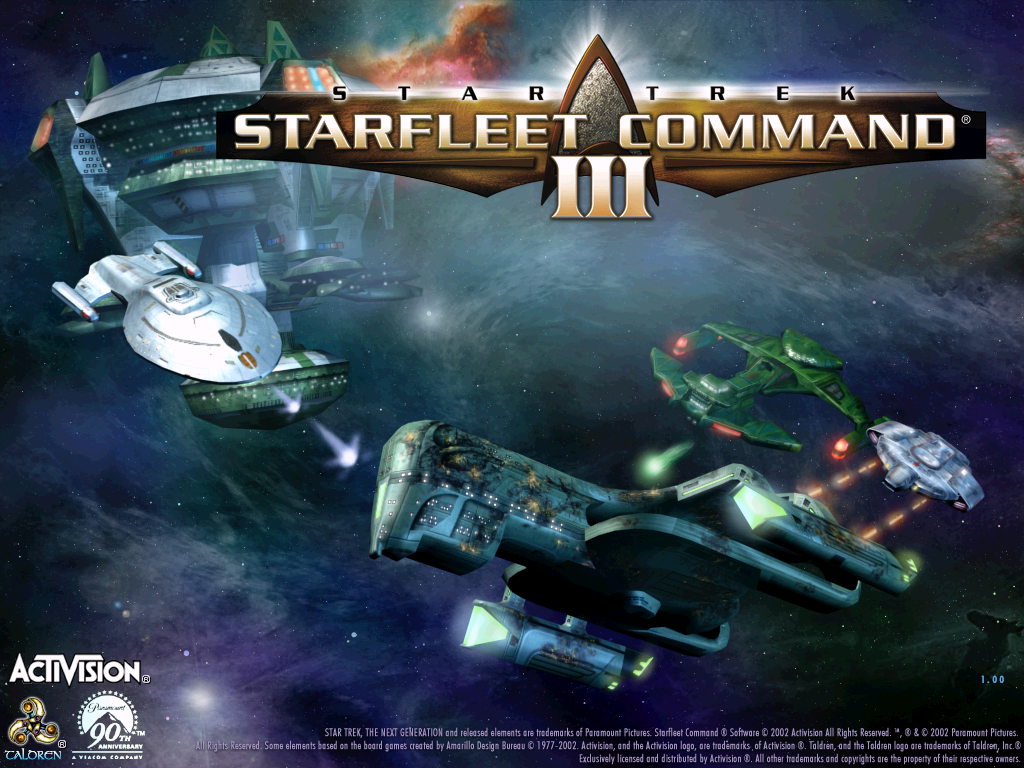The game is a real time combat game based of a very old tabletop
strategy game called Star
Fleet Battles. It is one of the more
unique games that I have ever played, not quite a real time strategy, not quite
a simulator, but an experience all to itself.
It involves taking command of a Starship from any number of species and
fighting, exploring, scanning, talking, and doing all sorts of Star Trek
things. It was oddly turn based, but
also real time, so it is hard to explain.
If I can find a good youtube link for it, I’ll put it further down in
this post.
First, let’s give a little background on the series and its
inspiration. Star Fleet Command is based
on Star Fleet Battles. It was (and still
is) a tabletop strategy games, one of the most complicated I have seen in a
long time. It was, in turn, based solely
on the Original Series of Star trek and the Animated Series. It was unique in the fact that they had a
license to the name Star Fleet, but not Star Trek. So when new things came out, such as the
original movies, Next Generation, and beyond, Star Fleet Battles (or SFB) was
left out, and couldn’t use any of that material.
They got their rights from a publisher of the book, the Star
Fleet Technical Manual, a book of schematics by a man named Franz
Joseph. He had the original Enterprise
included, but he also created several unique ships such as the Federation Class Dreadnaught and the Saladin Class Destroyer. Here is a link to a
picture of all of his ships.
So what did they do?
They made their own Star Trek Universe, in this case, known as the Star
Fleet Universe. They used many of the
original aliens used in the original Star Trek, the Romulans, Klingons,
Tholians, Orions, and a few others, some from the Animated series, such as the
Kzinti (also known as the Mirak in Starfleet Command II), and they created a few species of their own, such as the
Lyrans and the Hydrans.
The game was a complicated one, played in long turns divided
into 32 sub-turns, and played on a hex-based map. The game was obviously a tactical combat game,
played with 1 or more players and any number of ships, from one on one to
dozens of ships (though a game that big would take a long time). Players could manage almost every aspect of
their ship, from target lock ons to scanning and launching probes, to firing
phasers, disruptors, photon torpedoes, and huge array of other weapons.
Now, Starfleet Command was a unique prospect because its
developers had the rights to both star trek and Star Fleet Battles. This meant they could use newer Star Trek
content and the SFB rules set to create a pretty cool computer gaming
experience. The game was set in the Movie era of startrek, meaning the Refit
Enterprise and the Miranda Class
from Wrath of Kahn. They also made some
new ships, such as my all time favorite, the
Akula Class. Everyone starts out with 1-3 ships whether it be campaign,
skirmish, or multiplayer. Ships have a
set amount of power that can be used for any number of ship functions:
transporters, tractor beams, shields, weapons, propulsion, and more. Missions range from simple pirate hunting one
on one to saving the earth from a huge fleet of Planet Killers. Game play videos don’t give the game credit,
but there is a demo
and it works fine on windows 7, as long as you adjust the compatibility settings. Also, all of the tutorials were voiced by
George Takei, which is pretty cool (Sulu, for those of you who don’t know).
Starfleet Command Volume II was more of the same, and when
it ain’t broke, don’t fix it. Two more
species were added, one of my favorite, the Mirak (or Kzinti from the original
tabletop game) and the Interstellar Concordium.
The campaign has had some overhauling, but overall it is more of the
same Starfleet goodness.
Starfleet Command 3 was a departure from the original
2. The developer and publisher switched
from Interplay to Activision, after Interplay tanked (which was a sad day, they
had some great games). With the change
in publisher, came some dumbing down of the game. Controls were simplified, ships became customizable,
and the time period was moved forward to a time slightly after the last Star
Trek Next Generation movie. We got to
pilot all the ships from the 90s tv shows and all of those movies. It was fun, but it lost something when it
became simpler. But, on the plus side,
it include the borg as a playable race, and even better, the game was narrated
by Patrick Stewart, which pretty much made the game amazing.
Overall, the games are great, and they are not a well-known
piece of gaming history, but they are worth the time to take a crack at. They are not easy to jump right into, but the
tutorials do a good job, but the 150 page manual is kinda a fun read, at least for me… I would still be interested in trying out the
tabletop game, but I doubt I know anyone with the patients for that kind of
game. I do hope to get some miniatures
from that game, just for the fun of it.
You’ll find out how I enjoy miniatures in some future posts. Unfortunately, you cannot buy these games
anywhere and they have been out of circulation for many years. I am sure there are copies out there on
amazon and ebay, and the demo is available.
If you have a chance, definitely check these games out.




No comments:
Post a Comment